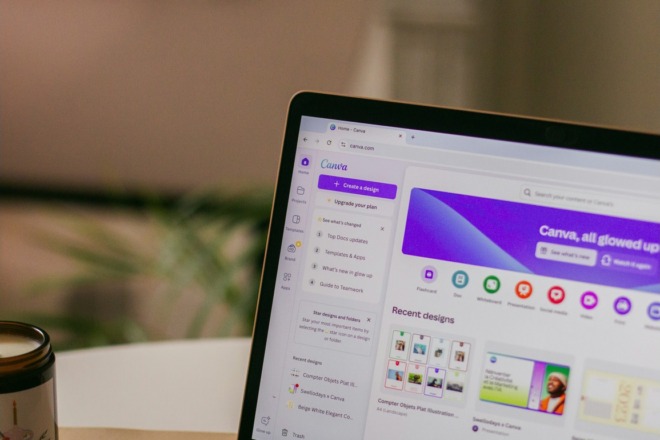Graphic design is an incredibly competitive market and there are always more professionals entering the industry. If you want to stand out, you need to be on top of your game — and that means constantly honing your skills and talents and showcasing what you can do as a graphic designer.
The question is, how do you continue to grow as a professional? What’s the best way to go from being good-enough to truly exceptional? What can you do to make sure you stand out to potential clients and employers?
Consider this the ultimate guide for becoming a phenomenal graphic designer.
What Skills Do You Need?
First, let’s take a look at some of the most important skills a graphic designer needs to excel, beyond innate creativity.
- Good communication
- Adept with technology
- Strong time management skills
- Typography expertise
- Marketing
- Usability (CX and EX)
Of course, a graphic designer must be creative and able to illustrate and design various kinds of visual content. But they must also be able to communicate their ideas effectively to others. Clients you work with may have a tough time understanding your design and layout ideas, and you’ll need to be able to express them accurately.
Furthermore, all designers must be familiar with usability elements like customer experience (CX) and user experience (UX) techniques. They may seem unrelated, but designs can directly affect how visitors and customers perceive a brand. You must be able to create something that is attractive yet easy to use and understand. This comes with a requirement for marketing knowledge as well.
Finally, the best graphic designers have excellent time management skills and are able to meet tight deadlines on their own. You won’t always have a short time to create designs or finish tasks, but when you do, the skill will be absolutely necessary.
There are many other skills that you will need to succeed in graphic design, but those listed here are some of the most crucial.
What Tools Should You Use?
You’ll need an equal mix of hardware and software tools to make it in web design. Some of the hardware is more obvious, like a desktop or laptop computer. Here’s a rundown of some of the possibilities:
- Studio or high-quality camera for photographs
- High-end smartphone for work, testing and creativity
- Adobe’s Creative Cloud suite
- Affinity Designer and Affinity Photo
- Corel Painter 2018 license
- Office Suites like Microsoft Office or Google Docs
- A dedicated creative space
To break some of these down, you’ll want a dedicated creative space where you can spend your time. That could either be a personal office in your home or rented space in a corporate or enterprise park. You can always take some time here or there to work in coffee shops or out in the wild — where you have an internet connection, obviously — but you’ll mostly want to work from a central base. That provides you ample time to be productive and get right to work, especially during crunch periods.
You’ll also need both a laptop and a desktop. You can get away with one or the other, but having both affords you the option to work from a single location like an office, and then move about with the laptop. A smartphone is also necessary, as there are many useful mobile apps for design. More importantly, you can use it for personal testing and the configuration of your designs.
Then there are the incredible software tools — many of which are expensive, unfortunately — like Adobe’s Creative Cloud suite, which includes access to Photoshop and more.
Realistically, though, it’s up to the designer what tools are used, so you’ll need to find a good mix of solutions that work for you. Some of the tools listed here may be out of your budget, or you may not even like to use them for personal reasons.
Useful Tips and Advice for Graphic Designers
You may already be familiar with most of the basics, and that’s okay. Here are some more in-depth tips that will help you become a better designer and overall professional.
1. Don’t Be Afraid to Throw Away Work
As you work on various projects and optimize their design, layout and look, you’re going to make mistakes. It’s just a natural thing. But you need to be able to discern when it’s time to stop working on a piece that should be thrown away. The more time you invest, the less you’ll be inclined to let it go. This can hinder your true creativity.
Sometimes it’s best to go into a project or draft with the idea that’s it’s merely a concept for things to come. In graphic design especially, where you’re constantly pushing the boundaries and exploring new opportunities, you need that trial space. Allow for it.
Just look at renowned Typographist Jan Tschichold — author of “Die Neue Typographie.” He established not just new standards for the art, but also introduced many iconic techniques and practices. You don’t push the boundaries as he did without making a few mistakes along the way.
2. Merge Design and Technology
Don’t get too wrapped up in the artistic and visual elements of design. They can and do lead to some truly remarkable setups, but sometimes it’s necessary to simply consider the technology you’re working with. Designing for mobile devices, for example, has come a long way in recent years thanks to ultra-HD displays and resolutions, but you’re still talking about smaller, handheld devices. A design has to service that experience and also factor in the on-the-go nature of mobile.
Susan Kare is a contemporary designer who worked for Apple and Steve Jobs’ NeXT, and is an excellent source of inspiration for all of this. Her creativity spawned the Monaco typeface, Geneva typeface, Command key symbol on Apple keyboards and many others.
Many of her designs are still in use and did an excellent job of providing beautiful imagery in a more functional way.
3. Find a Mentor
Experienced designers need not apply. Then again, maybe they still should! You can learn some of the best skills and techniques by studying under a master artisan. Doing so doesn’t necessarily mean you have to give up freelance opportunities and work with a big firm. You can simply reach out to potential partners or even take courses.
Palma il Giovane, or Palma the Young, once studied under the famous Renaissance painter Tintoretto. As a result, Palma honed his skills and become Venice’s most sought-after artist, responsible for some of the most valuable masterpieces in the world.
Even the greats have mentors.
4. Choose a Specialty
Graphic art and design is an incredibly broad field. You can’t hope to succeed at everything it touches upon. Even the most skilled graphic designer in the world is going to have trouble honing everything from print and traditional design to modern digital projects. Some may focus on typography and others may focus on web designs or website functionality. Further still, some might do their work for businesses while others prefer to work with individuals. Whatever the case, choose a specialty and work on developing your technique.
Maybe you prefer logo design? Maybe your preference is mobile-friendly layouts or websites? Perhaps you only want to work on desktop apps? The beauty of graphic design is that it’s so vast and you have many opportunities.
It’s important to note that you shouldn’t block yourself off from other opportunities. It’s okay to explore and it’s okay to work within the entire purview of graphic design. The point is that you should still focus on perfecting one or two specialties within the field to ensure you become the best of the best.
5. Discover Your Signature Style
Every graphic designer and artist has something to say — and it comes out in their work. Grunge, expressionism, photo realism, minimalism, abstract design — they are all different styles of visual design and they encompass thousands of opportunities. Within those greater styles, however, you need to find your own voice.
Bradbury Thompson does exactly this by borrowing different elements of modern style, yet injecting his work with his own personality. He created some of the most iconic 20th-century graphic designs, not the least of which included visuals for over 90 different U.S. postal stamps.
Exceptional Art Means Knowing Oneself
As you can see from many of the tips and ideas discussed here, it’s important that you understand yourself as well as your capabilities — especially if you wish to excel in your field. This is not to set limits on yourself and what you can do based on your talents, but more about honing your work. If you know what you’re good at, you can continue to develop and strengthen those talents and grow to be something truly amazing.
Honor a lifestyle of perpetual improvement and you’ll find yourself constantly pushing the boundaries, which is exactly what many renowned artists and designers have done.
About The Author
Eleanor Hecks is the Editor-in-Chief of Designerly Magazine, an online publication dedicated to providing in-depth content from the design and marketing industries. When she's not designing or writing code, you can find her exploring the outdoors with her husband and dog in their RV, burning calories at a local Zumba class, or curled up with a good book with her cats Gem and Cali.
You can find more of Eleanor's work at www.eleanorhecks.com.



Being a graphic designer is also not easy. One needs a lot of work.
After doing graphic designing many people are not able to get a job due to lack of experience. I was one of them. But then I heard about internship. It is a practical training for the job which acts as a stair between the qualification and job. I did my internship and soon got a job.
You can also look in for the help of sites such as indeed(dot)com, naukri(dot)com, wayup(dot)com and https://www.mychatri.com/ . These are of great help.
This appreciable post, the information you gave to us is valuable. As a Graphic designer, I know it is not very easy to do graphic designing.
Thanks for sharing these effective skills for graphic designing.
Well written article. It is really valuable and useful information how to be an exceptional graphic design. Thanks for this.
This is great advice. I agree with skills list you’ve provided. When it comes to the tools you’ve listed, I am a huge fan of the Adobe Creative Cloud suite because they’re so innovative, which helps a great deal in being a step ahead of those not using it.
Well written article. Thanks for sharing these effective skills for graphic design.
Great article, Designerly! Very informative. Especially the heading “Don’t Be Afraid to Throw Away Work” – something I had to learn the hard way.